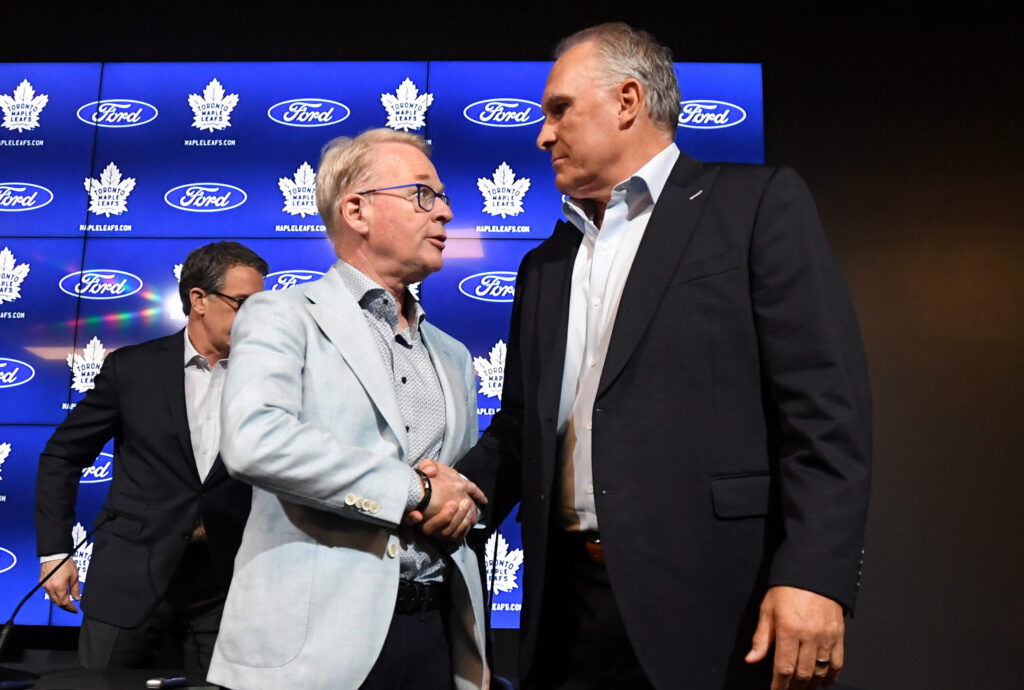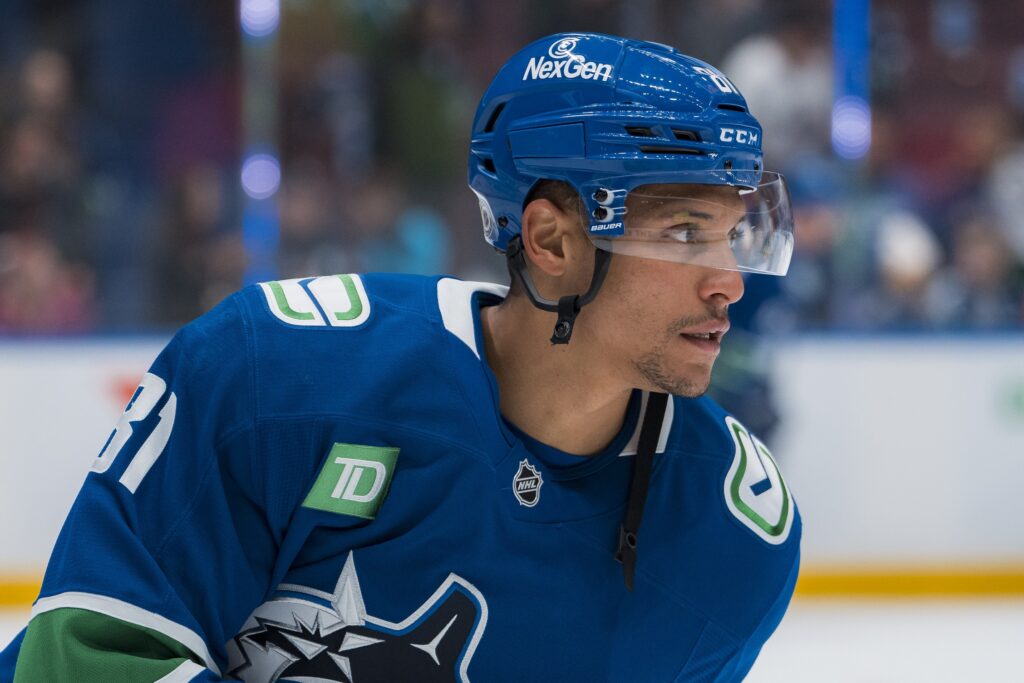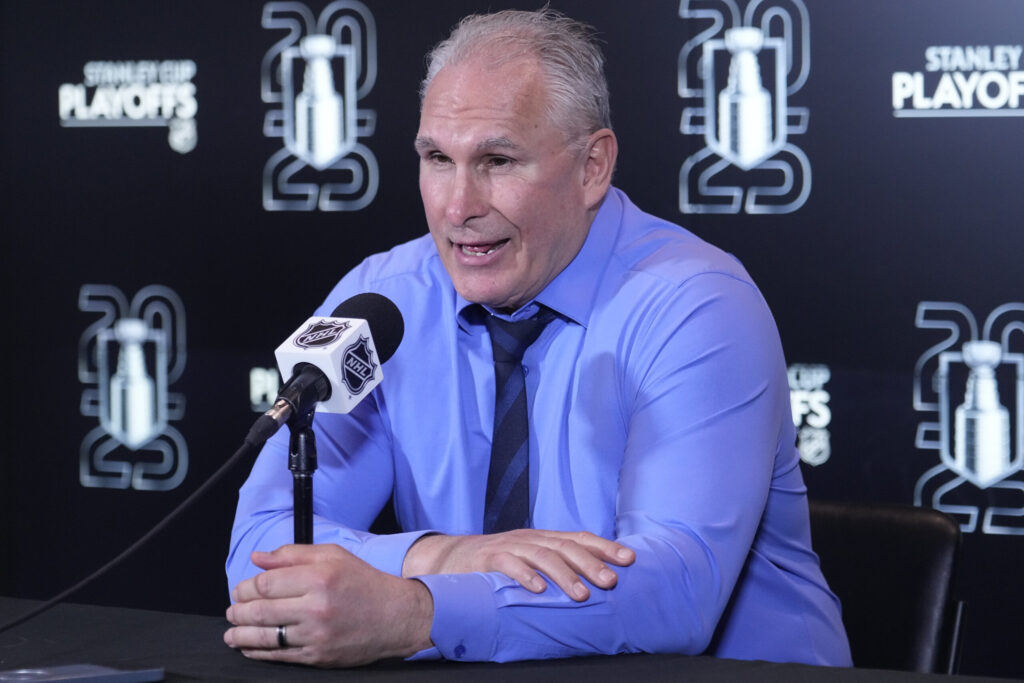The echoes of last season have faded, and the sting of another playoff exit has given way to the familiar, hopeful hum of a new campaign. But this isn’t the same Toronto Maple Leafs team, and Head Coach Craig Berube is making it clear that this isn’t going to be the same approach. Entering his second year at the helm, a year removed from the whirlwind of taking over a new organization, Berube’s vision for the team is crystallizing. And it’s a vision forged not in the shadow of who’s gone, but in the fire of what they must become.
Speaking with a sense of familiarity and renewed excitement, Berube laid out the blueprint for the 2025-26 Maple Leafs. The core identity, he insists, remains the same, but the mission is singular: get better. And for Berube, “better” starts with “tougher.”
Also on the EDGE – Mapping Out the Toronto Maple Leafs’ 2025-26 Trade Landscape
The Gospel of “Tough”
Berube is quick to define his terms. This isn’t about fighting. It’s about a deep, ingrained resilience. “Tougher” is being a hard, physical team that is mentally unshakeable—a group that can, in his words, “bend, but not break.”
This focus on mental fortitude seems laser-focused on one of the team’s most glaring Achilles’ heels: performing under the bright lights at home. Berube pointedly recalled the pivotal home losses in Games 5 and 7 against Florida in the second round of the 2025 Stanley Cup Playoffs, where he saw a team that became impatient, deviated from the game plan, and ultimately failed to rise to the occasion. This stood in stark contrast to their Game 6 performance on the road, where they were “solid, patient, heavy, and hard.”

The diagnosis? The team needs to conquer the unique pressures of playing in Toronto. Berube astutely observed that for visiting teams, especially those with Canadian or local players, a game at Scotiabank Arena is a circle-the-calendar event. They arrive “excited and jacked up,” turning every home game into a significant hurdle. Berube’s prescription is a dose of simplicity and substance over style. He wants the team to focus on “good, smart hockey plays” instead of trying to be “too cute” or forcing “great plays.” The plan to instill this mental toughness involves pointed discussions and video sessions, using past home games as case studies in how to maintain a consistent identity, regardless of the venue.
Life After Marner: The Sum of the Parts
You can’t discuss the upcoming season without addressing the elephant in the room: the departure of Mitch Marner. Berube was blunt and refreshingly honest about the void it creates.
“You don’t replace that,” he stated plainly.
He praised Marner as a “great, smart, and intelligent player” and a “workhorse” who impacted every facet of the game. But the strategy isn’t to find a Marner clone; it’s to fundamentally change the team’s composition. Instead of trying to fill one superstar’s skates, the goal is to improve the team in other ways by building a deeper, more balanced roster. This offseason was about shifting from a top-heavy model to one where collective strength outweighs individual brilliance.
The players brought in to execute this new vision speak volumes about the desired shift in philosophy. The additions of Nicolas Roy, Dakota Joshua, and Matias Maccelli signal a clear pivot towards a heavier, more responsible, and more versatile lineup.
Berube likes the “size” and “heaviness” that Roy and Joshua bring. He describes them as “long” players who are “heavy on pucks” and strong on the forecheck—the exact type of players who make a team harder to play against. Joshua, whom Berube coached in St. Louis, brings a known quantity of physicality and penalty-killing prowess. He’s a flexible winger who can slot anywhere in the middle six. Roy, acquired in the Marner deal, is penciled in as the third-line center, offering a valuable right-handed shot and defensive acumen.

Matias Maccelli is the offensive wildcard in this new deck. Berube lauded his playmaking ability and sees him as a crucial source of offense and creativity. While his exact placement is yet to be determined, he’ll be given every opportunity to find his footing and chemistry within the lineup. Together, these three acquisitions represent a deliberate move towards a team that can win battles in the corners and grind out tough games.
Shuffling the Deck: New Demands on the Core
With a new roster construction come new expectations for the established core. The departure of a perennial linemate means Auston Matthews’ game will naturally have to evolve. Berube suggested Matthews may need to hang onto the puck longer and do more for himself in the offensive zone to create space and opportunities. Finding new chemistry will be paramount, as will staying healthy, which hampered his production at times last season despite his strong 200-foot game.
Also on the EDGE – The New Equation: 4 Maple Leafs Who Will Define the Post-Marner Era
Poised to potentially start on Matthews’ wing is Matthew Knies. Berube’s expectations for the young power forward are clear: don’t change a thing. He wants Knies to continue playing in straight lines, winning battles, excelling on the forecheck, and driving to the net. While more goals would be welcome, it can’t come at the expense of his core identity as a puck-possession force who complements a superstar by doing the dirty work.
Meanwhile, the team’s veteran leadership remains firmly in place. Berube expressed his happiness that John Tavares re-signed, calling him an “excellent professional” and leader who had a “tremendous year.” Tavares, along with Morgan Rielly, will retain his “A” as an alternate captain. Speaking of Rielly, Berube expects a significant offensive resurgence. He feels that Rielly’s focus on becoming a better, more physical defender last season may have temporarily suppressed his offensive instincts. After a “hell of a summer,” Berube believes we will see a “different player” in Rielly this year.
As for William Nylander, don’t expect to see him moved to the top line. Berube shot down the idea, emphasizing his preference for a balanced offensive attack and his satisfaction with the consistent chemistry Nylander has with Tavares on a formidable second line.

The Road Ahead
The pieces are in place, from the “warrior” Chris Tanev providing stability on the back end to the “great tandem” in goal that will once again share the load. The addition of former Red Wings head coach Derek Lalonde to the coaching staff adds another “very intelligent” voice to the room, someone Berube believes will excel at teaching and developing players.
The challenge now is to mold these pieces into a cohesive, resilient unit, and to do it during a demanding Olympic season where practice time will be at a premium. Berube is already mindful of the schedule, stressing the need to manage players’ physical and mental states with strategic rest.
The Eastern Conference, particularly the Atlantic Division, will be a “battle.” Berube sees improved teams in Ottawa and tough opposition in Florida, Tampa, and Montreal. There will be no easy nights. But the message from the coach is clear: The Toronto Maple Leafs are preparing for that battle with a new blueprint. It’s a blueprint built on depth over star power, on mental toughness over flashy plays, and on a collective will to be harder, tougher, and ultimately, better. The work starts now.
Created with the aid of Gemini AI
